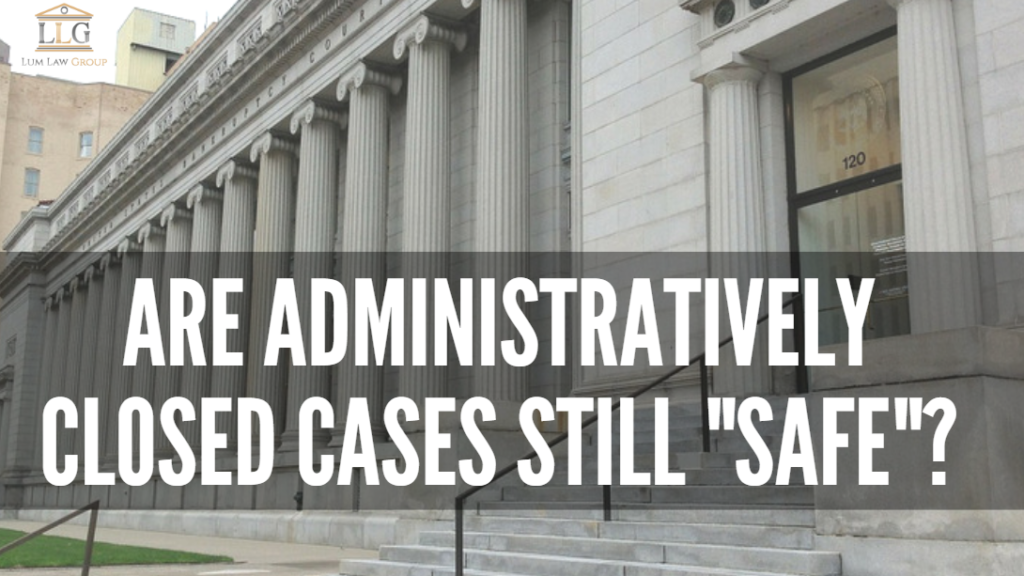If I marry a US Citizen, will I avoid deportation?

Many of our non-status clients believe marrying a U.S. citizen will solve their immigration problems. Undocumented clients will either jump into a marriage head first for a chance at a marriage green card, or they’d wait until they’re detained to marry their beloved. Then, they’ll come to us and expect the marriage certificate to solve […]
Undocumented and Deportable: How to Prepare

Amid recent news on an increase in Immigration & Citizenship Enforcement (ICE) raids, many may worry about detainment. While California is immigrant-friendly, it doesn’t mean law enforcement won’t turn you over to ICE. It also does not prevent federal agents from taking you into custody. If you’re undocumented and worry you might be detained or […]
Are Administratively Closed Immigration Court Cases Still “Safe”?

On May 17, 2018, Attorney General Jeff Sessions overruled a Immigration Judge’s decision in Matter of CASTRO-TUM, 27 I&N Dec. 187, clarifying that immigration judges and the Board of Immigration Appeals (BIA) does not have the authority to administratively close cases indefinitely. What does this mean? In short, you can no longer request prosecutorial discretion […]
Deportation is not THE END – When there is hope

Deportation has become a source of tears, hardship, and anxiety for many of our clients in recent months. The new administration has tightened policies, increased the number of ICE arrests, and limited the amount of discretion at the disposal of individual officers. As a result, we have seen an increase in the number of detainees […]
What does it mean to be scheduled for a “Removal Hearing” (deportation)?

If you are out of status and deemed “removable”, you will be placed in “removal proceedings” and scheduled for a “Removal Hearing” with U.S. Immigration court. You will receive a “Notice to Appear” (NTA) which informs you when and where your hearing will take place. The government will provide proof as to why you are […]

